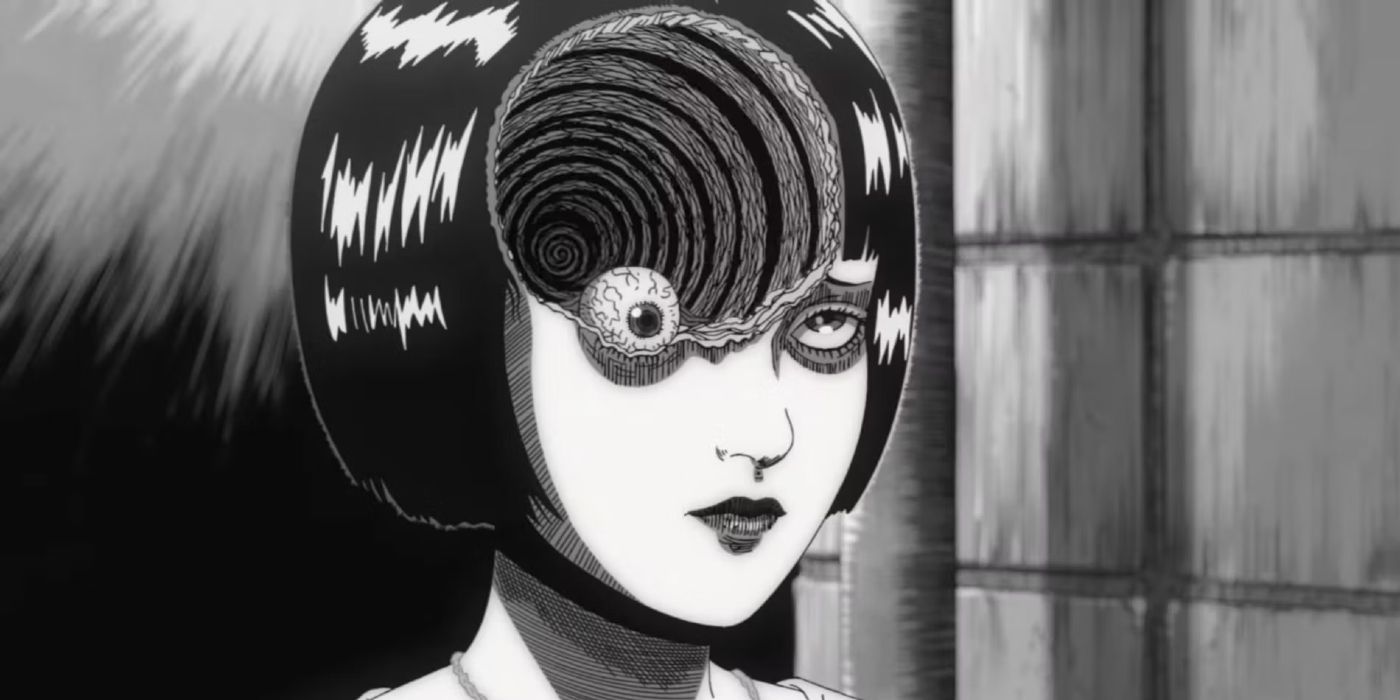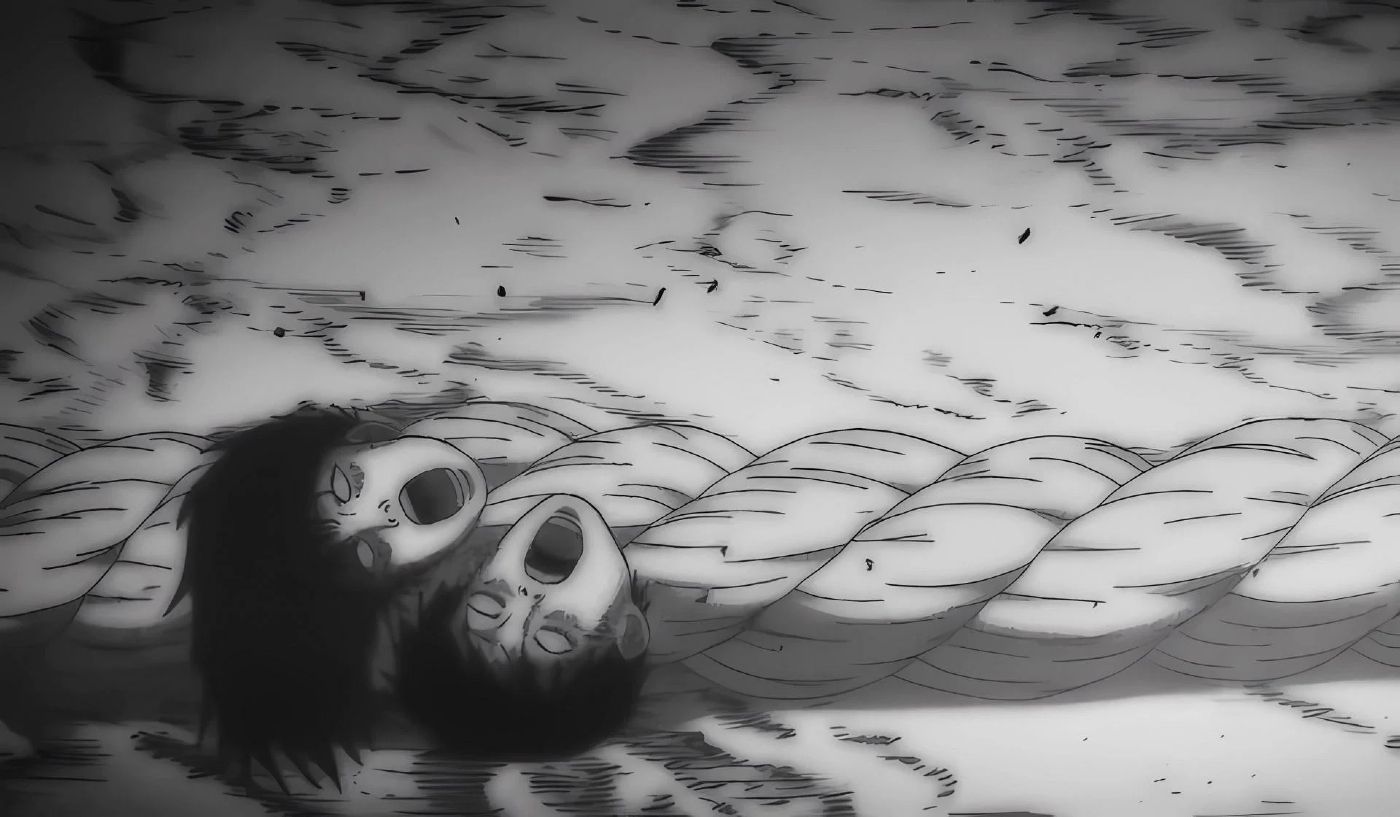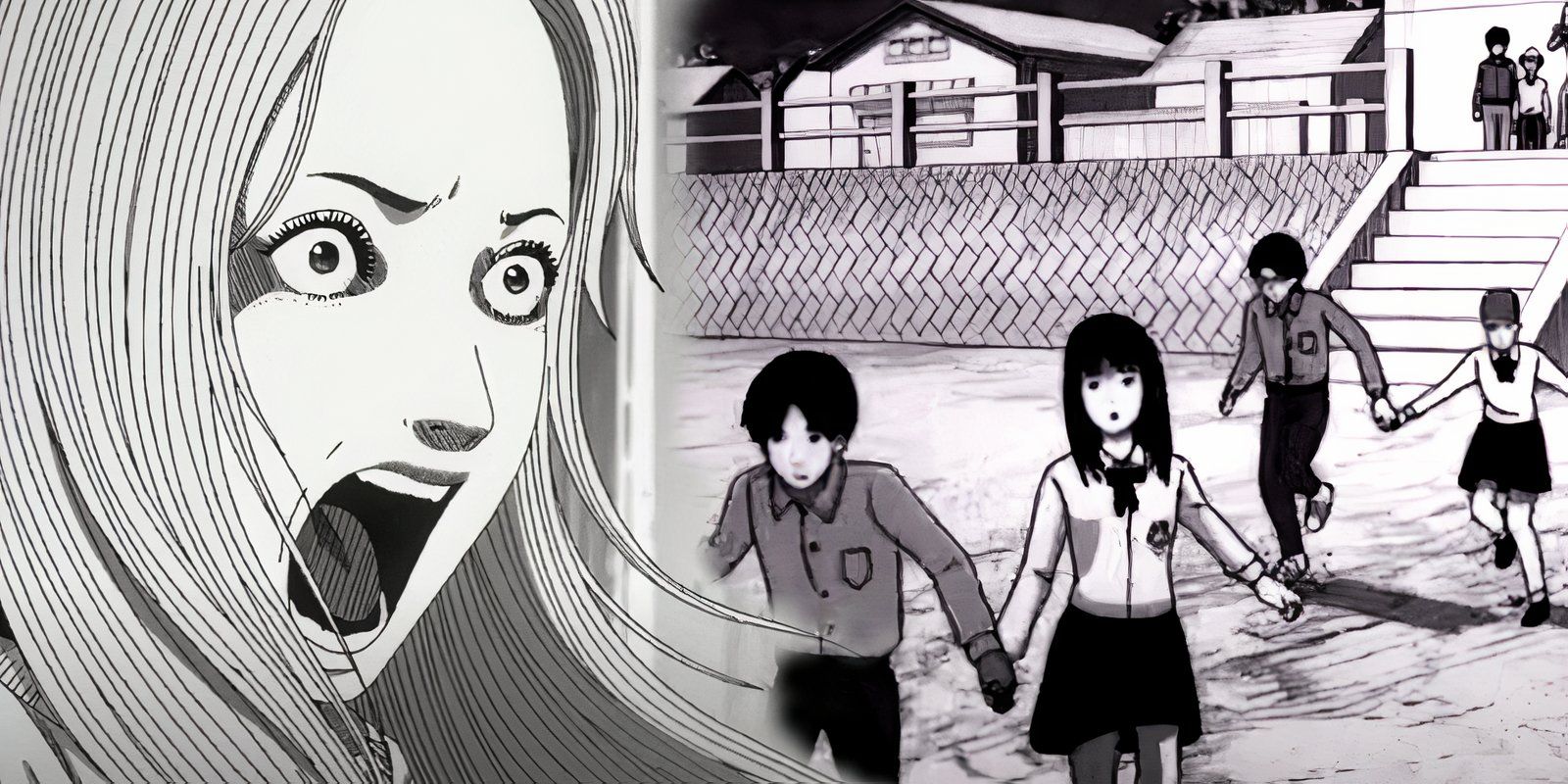
Warning: spoilers ahead for the second episode of Uzumaki!Incredibly subtle detail in the last episode Uzumaki it's actually a genius way to adapt the story. There is no doubt that the second episode of the long-awaited miniseries based on the cult manga by Junji Ito disappointed fans. The noticeable change in animation quality led to even the executive producer speaking out about the controversy. However, the bright side of this episode is a rather ingenious detail that probably went unnoticed by some fans.
In some of the most stressful moments Uzumaki In Episode 2, for example, in the sequence where Kazunori and Yoriko are hanging out on the beach together in an adaptation of one of the manga's most terrifying chapters, there is a subtle shift in the way the anime looks. There are small imperfections that come and go as the frame around the stage begins to darken. Essentially Uzumaki these sequences use film grain to give an old-school feel brought on by the deterioration of film quality. Thanks to this technique, Junji Ito's story manages to bring a new level of horror that can only be shown in anime.
Using film grain makes the spiral curse look otherworldly
This anime technique adds a new layer to Ito's terrifying work
What works about this stylistic choice for Uzumaki anime is that it is used sparingly. In fact, he only appears at points in the story when Kuruzu-cho's curse intensifies.showing an undeniable scene where something strange is happening. The rest of the episode up to these points is shown in standard fashion as the curse continues to haunt the town and its inhabitants. However, once it actually happens, the addition of this style of filmmaking adds depth to an already horrifying image.
With this subtle change in visual tone, The curse placed on the city appears to be supernatural and supernatural as the film's deterioration gradually becomes more intense. The beach scene uses this technique particularly well: it becomes dark as Yoriko and Kazunori twist their bodies and hug each other. It makes the whole scene feel like an old horror movie lost in time, which works in its favor as it fits with how twisted the concept is Uzumaki May be.
A slight change in Uzumaki's style could only be achieved through anime
Junji Ito could never replicate that feeling on the page in the same way
The Spiral Curse in the original story is meant to have a Lovecraftian feel to it as he pushes the limits of the human body to make his characters fit the twisted form. Junji Ito is able to perfectly convey this eerie feeling through his unique works of art that have given fans nightmares for decades. This is why many adaptations of his work have struggled over the years, as they have never been able to truly capture what made the images so frightening on paper. However, the stylistic choices made in the anime adaptation something that Ito could never truly recreate himself.
FThe degradation in image quality is something that movement on the screen contributes to fully highlight its grainy design. Seeing these spots and lines appear and disappear in the blink of an eye is something unique to cinema. This subtle design choice is a brilliant way to enhance an already disturbing piece of art and adapt it to the screen in a way that the story's author never could. It creates a supernatural feeling that only film can provide, setting the stage for how future adaptations of Ito's work might be made in the future.
Was film grain included to avoid a drop in animation quality?
Uzumaki's Best Design Choice May Have Been Accidental
What's surprising about this shift in design? Uzumaki the anime is about how this could have happened by mistake rather than as a deliberate choice. Episode 2 received criticism from fans due to a noticeable drop in quality, especially compared to the beautifully animated first episode of the miniseries, which suggested a great adaptation to come. Considering this, it is quite possible that these unique moments were only used to cover up some of the more shaky moments of the animation. This would make sense during more horrifying scenes as the imagery stretches the imagination. If so, then it would be good for the series.
Regardless of the reason for this design choice, it's a stellar inclusion that serves as a bright spot for a disappointing second episode. This allows Junji Ito's original story to adapt to the new environment, while also enhancing the imagery that was already terrifying in the original manga. This is a very subtle change in design, but at the same time an ingenious solution that adds Uzumakilegacy as one of the greatest horror stories of all time.
Uzumaki: Spiral into Terror is an adaptation of the famous manga by Junji Ito, directed by Hiroshi Nagahama. The series is set in the city of Kurozu-cho, where unexplained events involving spirals plague the residents, leading to horror and madness. Emphasizing the psychological and supernatural, the series follows high school student Kirie Goshima and her boyfriend Shuichi Saito as they confront the growing horrors plaguing their town.

